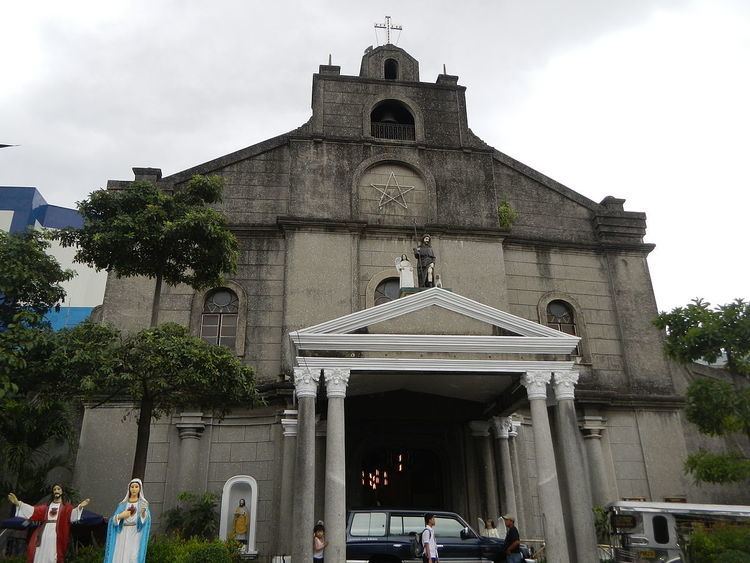Opened 1981 | Founded 1815 Phone +63 939 907 6804 | |
 | ||
Similar Jesus de la Peña Chapel, Archdiocesan Shrine of Espiritu S, San Nicolas de Tolentino, Santa Cruz Church, Ermita Church | ||
Caloocan Cathedral, known canonically as San Roque Cathedral, is the cathedral of the Roman Catholic Diocese of Kalookan, located near the intersection of 10th Avenue and A. Mabini Street in South Caloocan, Metro Manila, Philippines. Its present Parish Priest and rector is Rev. Fr. Rafael Gaudioso A. Sustento.
History
The parish started as a small visita (chapel-of-ease) initiated by Manuel Vaquero, assistant priest of Tondo, Manila, who with the cooperation of the people also built a place of worship in one of the districts of Caloocan called Libis Aromahan (Sitio de Espinas) in 1765. The priest gave this community two statues: San Roque and the Nuestra Señora dela Nieva (Our Lady of Snow). The church was erected a parish on April 8, 1815, by the Archbishop of Manila Juan Antonio de Zulaibar, O.P. with Fray Manuel de San Miguel, OAR as the first parish priest. Its formal erection as an independent parish also marked the transfer of the church to its present site. This site was called Paltok, an elevated district in the town of Caloocan. Construction began on a bigger church in 1819 under Fray Vicente de San Francisco Xavier, OAR and was finished in 1847 under Fray Cipriano Garcia, OAR.
In 1889 San Roque ceased as a parish as it did not meet requirements posted by the Archbishop. The church could not raise the proper tributos y numero de las almas (tributes and alms) prescribed by the archbishop. Jose Aranguren, OAR, revived San Roque into a parish upon his appointment as Archbishop in 1892.
During the Philippine revolution against the Spaniards and later, against the Americans, San Roque Church played a part as the meeting place of the Katipuneros coming from the west coast of Manila going to Balintawak. On February 10, 1899, the church was partly destroyed by US forces during the Philippine-American War when General Antonio Luna sought refuge at the church. After the capture of the place, the Americans used the whole area as a field hospital. In 1900, General Arthur MacArthur invaded Caloocan and the church of San Roque was made caballeriza by the regiment of Col. Frederick Funston.
After the havoc of the war, the church was again constructed by the Confradia de Sagrado Corazon de Jesus in 1914 under the administration of parish priest Victor Raymundo.
Fr. Eusebio Carreon (1934) put black and white tiles along the aisles; Fr.Pedro Abad (1947) renovated the façade and Msgr. Pedro Vicedo (1962) built additional wings on both sides of the church.
The church deteriorated over the years. In 1977 Msgr. Augurio Juta planned a new church but this plan did not materialize due to his abrupt transfer to Sta. Ana, Taguig in December 1979. He was succeeded by Msgr. Boanerges "Ben" A. Lechuga, who renovated the church. It was blessed on November 30, 1981 by Manila Archbishop Jaime Cardinal Sin.
In the Jubilee Year 2000, San Roque Church was declared one of the Jubilee Churches in the Archdiocese of Manila.
Pope John Paul II, in his Apostolic Letter “Quoniam Quaelibet” of June 28, 2003, created the new Diocese of Kalookan, consisting of Caloocan City-South, Malabon City and Navotas City, and elevated the church to a Cathedral. The Pope appointed Deogracias S. Iñiguez, Bishop of Iba, Zambales, as the first Bishop of the diocese. He took possession of the diocese on August 22, 2003. Msgr. Boanerges "Ben" Lechuga, then parish priest during that time, was the first cathedral Rector and the first Vicar-General of the diocese.
Bishop Francisco M. De Leon, D.D. was appointed Apostolic Administrator of the diocese, following the retirement of Iñiguez (later residing at the National Shrine of the Divine Mercy, Marilao, Bulacan).[1][2]
